- Home
- slideshows
- miscellaneous
- Hudson Yards is the most expensive real estate development in US history. Here's what it's like inside the $25 billion neighborhood.
Hudson Yards is the most expensive real estate development in US history. Here's what it's like inside the $25 billion neighborhood.
Stepping onto the construction site, the eye immediately goes toward Vessel, a $150 million public art installation.

The structure is the brainchild of British designer Thomas Heatherwick, who designed the 2012 Olympic cauldron and Seed Cathedral in the UK.
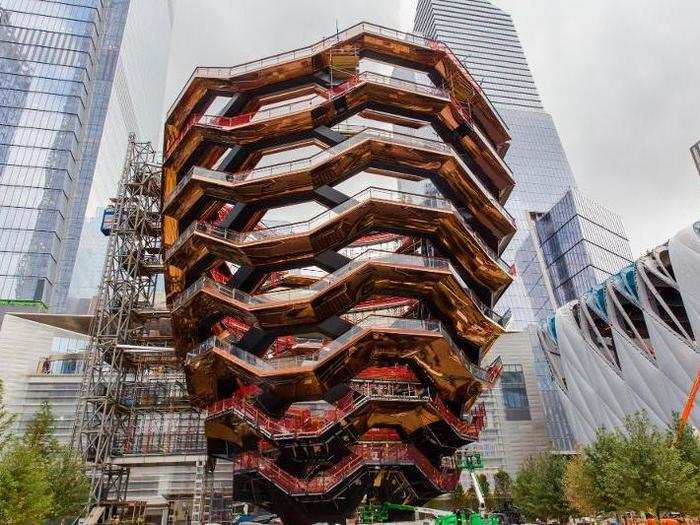
Vessel is comprised of 154 interconnecting flights of stairs, which total almost 2,500 individual steps.
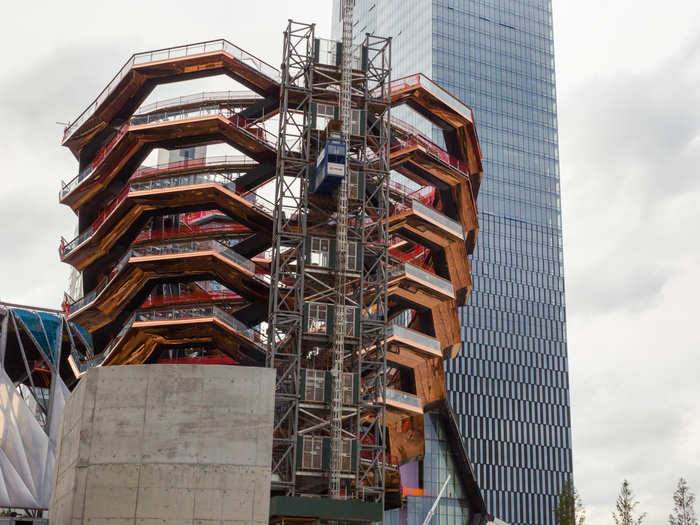
The base alone is 50 feet tall.
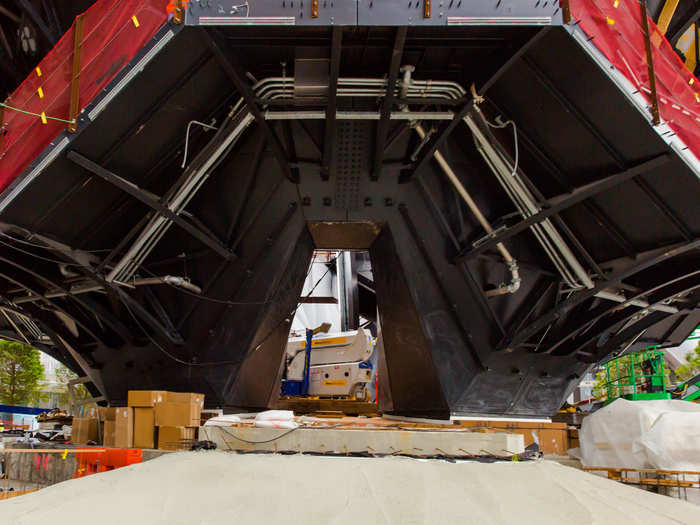
The building's 80 different landings offer multiple views of the Hudson River.
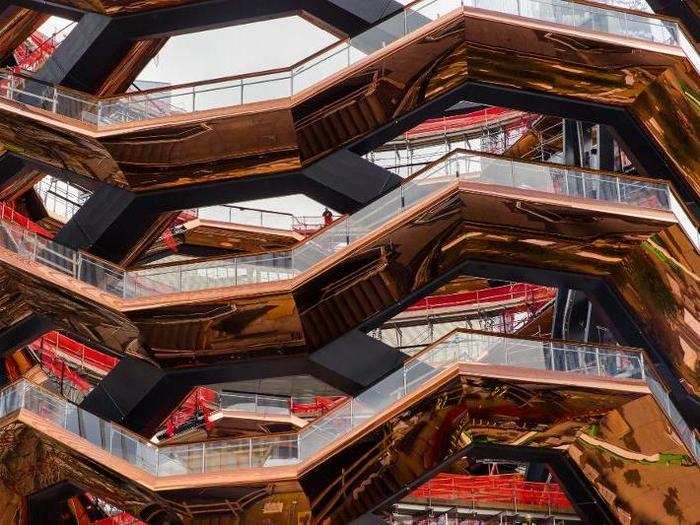
The walls consist of a painted steel frame polished with a copper-colored steel skin.
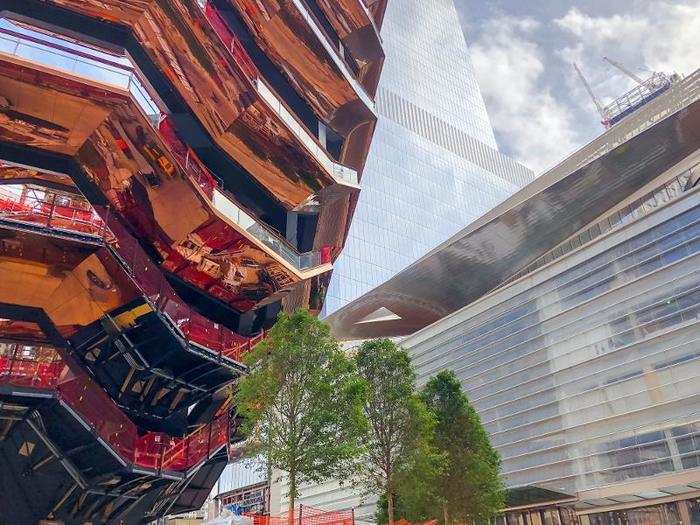
Construction on Vessel began in April 2017, and is scheduled to be complete by March 2019.
Nestled between 10 and 30 Hudson Yards, the site's 720,000-square-foot retail building is anchored by Neiman Marcus, which will occupy three floors.
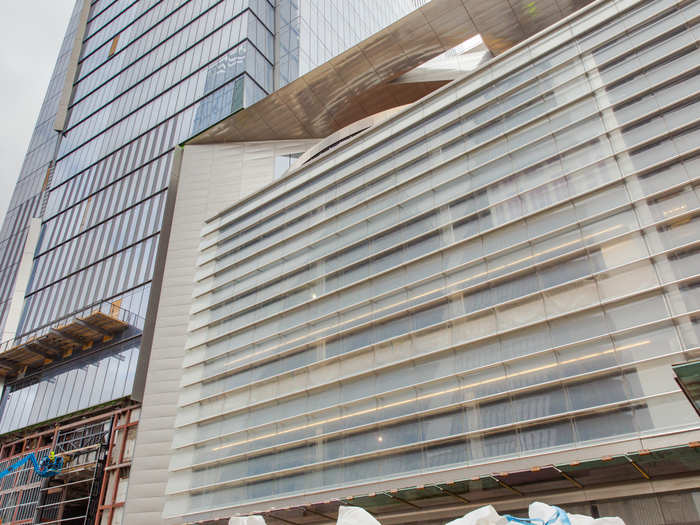
The building, which opens in March, features two gilded observation decks that overlook the public square.
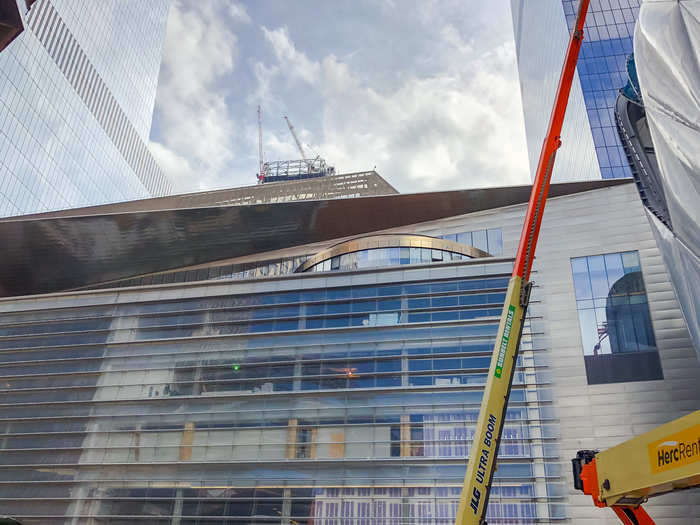
The building's tenants include Zara, H&M, Sephora, Banana Republic, and a 6,000-square-foot Watches of Switzerland showroom.
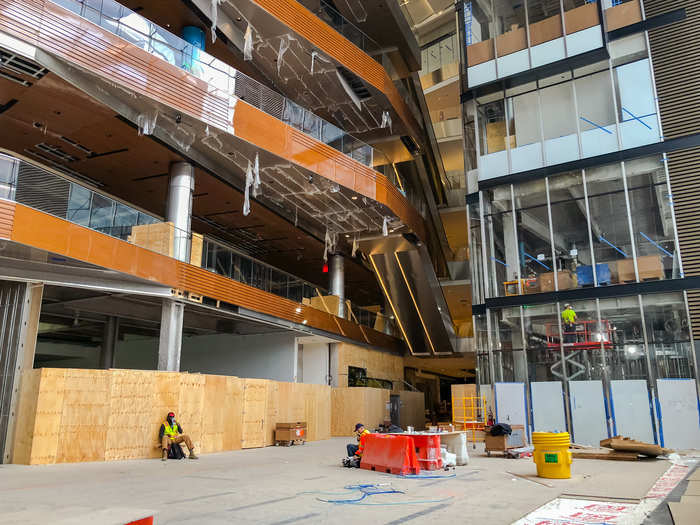
To the right of the retail center is 10 Hudson Yards, which feeds directly into the High Line. The structure is designed to meet LEED Platinum standards — the highest green building certification.
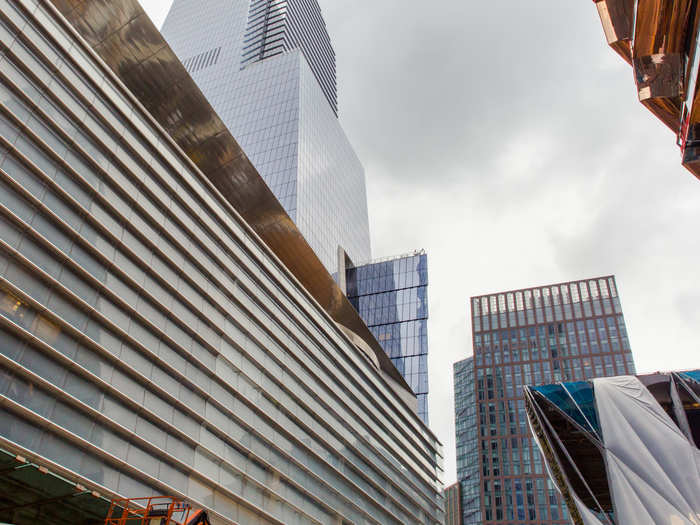
The structure, which opened in May 2016, already contains companies like L'Oréal USA, Sidewalk Labs, Guardian, and The Boston Consulting Group.
Each year, the site's irrigation systems will filter and reuse nearly 10 million gallons of storm water collected from roofs and public plazas.
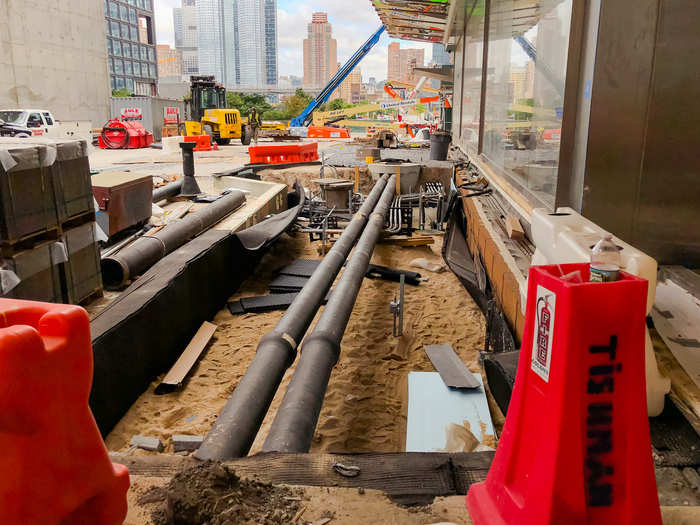
The site uses data sensors to capture traffic patterns, air quality, pedestrian flow, and power demands.
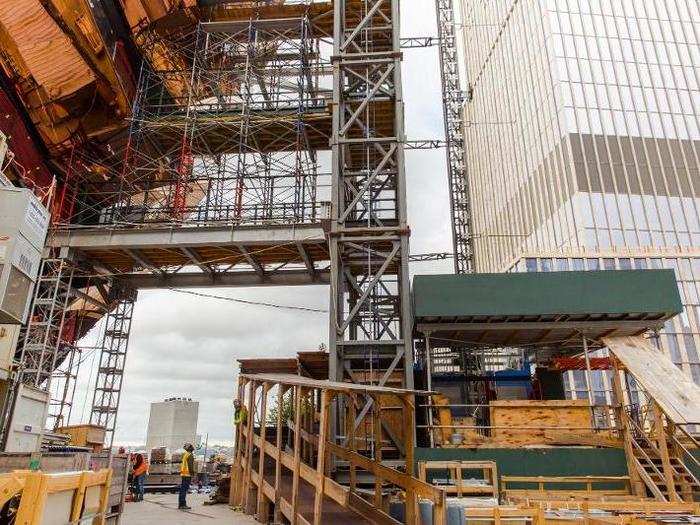
Before it approved the development plans, the city mandated the construction of a nonprofit cultural center. This led to the creation of The Shed, which will host events like art installations, concerts, and conventions.
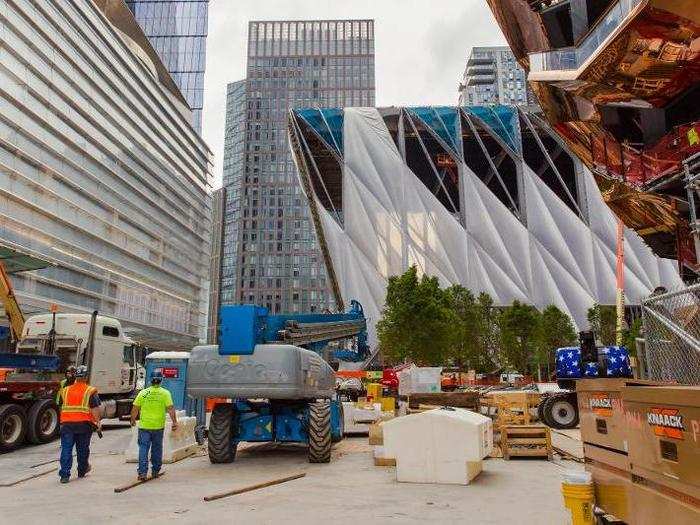
The Shed features a retractable outer shell, which can be activated within five minutes via wireless remote to create a temperature-controlled space.
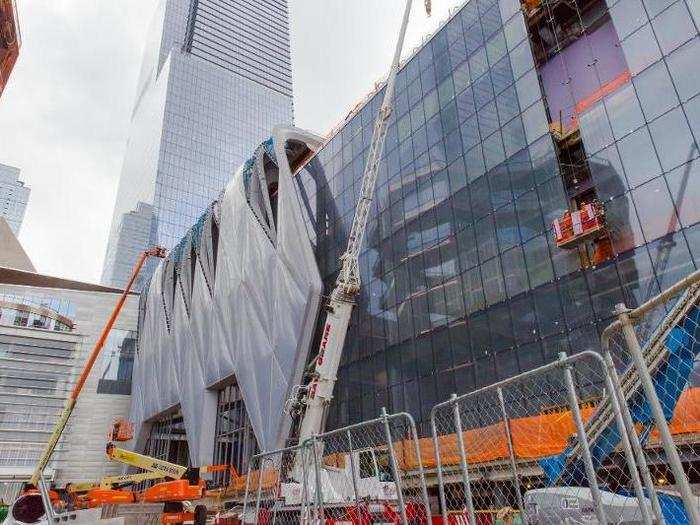
The shell is held up by six track-bound wheels, which allow it to roll back for outdoor events.
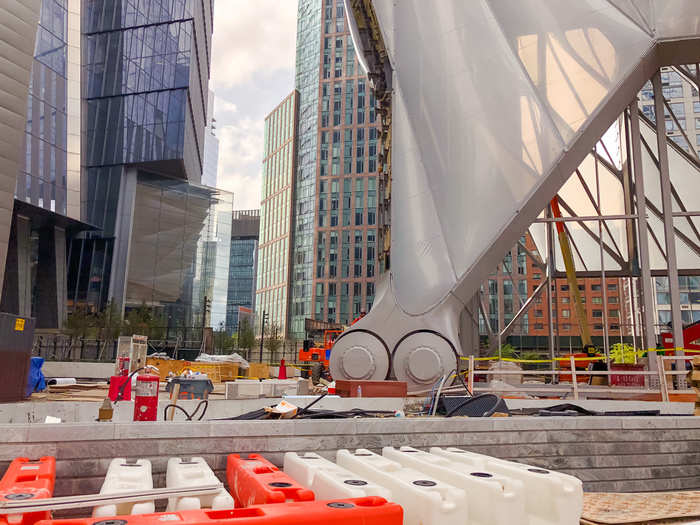
The building, which drew inspiration from the Palais-Royal in Paris, is being touted as a potential site for New York Fashion Week.
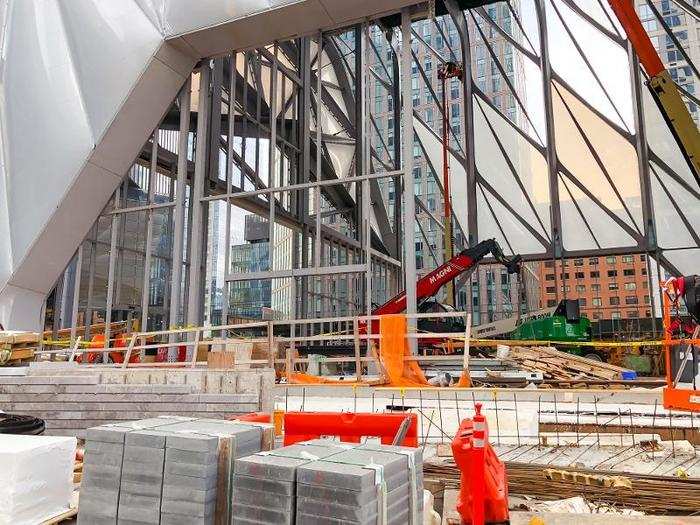
To the right of The Shed, 15 Hudson Yards offers nearly 400 rental and for-sale residences, including 100 affordable apartments.
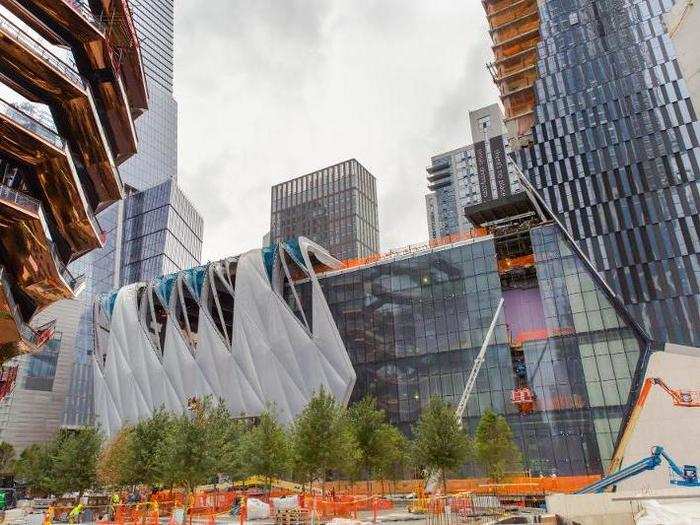
The building, which contains a 75-foot swimming pool, screening room, rooftop lounge, and private co-working space, directly overlooks the Hudson River.
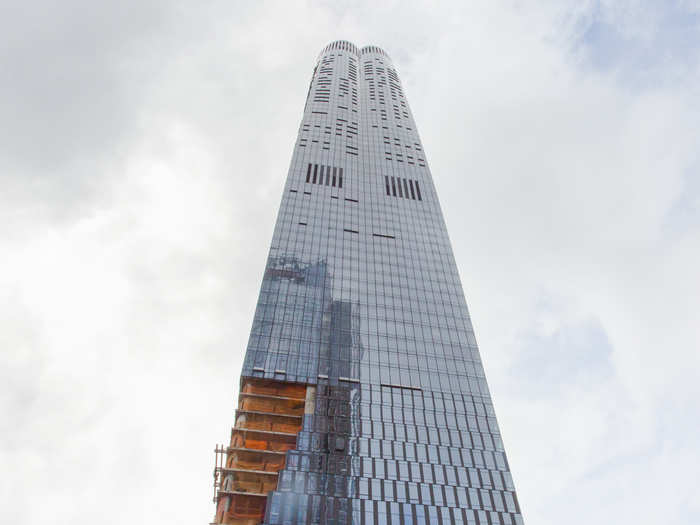
A standard apartment starts at around $3.9 million, and more than half of the units have already been sold.
The president of Related Hudson Yards, Jay Cross, said the typical tenant is a domestic buyer with multiple homes. "[Perhaps] they’ve raised their family in New Jersey or Westchester and they want to have a place in the city," he said.
![The president of Related Hudson Yards, Jay Cross, said the typical tenant is a domestic buyer with multiple homes. "[Perhaps] they’ve raised their family in New Jersey or Westchester and they want to have a place in the city," he said.](https://staticbiassets.in/thumb/msid-66031109,width-700,height-525,imgsize-1158492/the-president-of-related-hudson-yards-jay-cross-said-the-typical-tenant-is-a-domestic-buyer-with-multiple-homes-perhaps-theyve-raised-their-family-in-new-jersey-or-westchester-and-they-want-to-have-a-place-in-the-city-he-said-.jpg)
Cross calls the site "one giant 80-20" — a reference to the city's housing program, which requires at least 20% of units to be set aside for low-income residents.
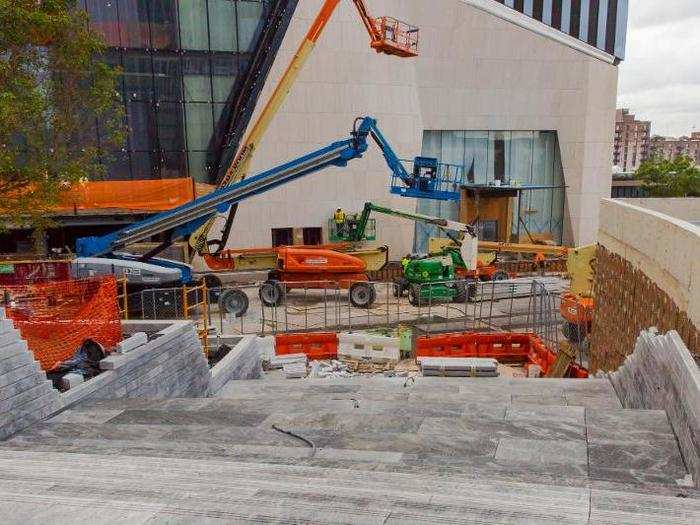
Across the plaza is 35 Hudson Yards, the future home of 60,000-square-foot Equinox fitness center and an Equinox Hotel with more than 200 rooms.
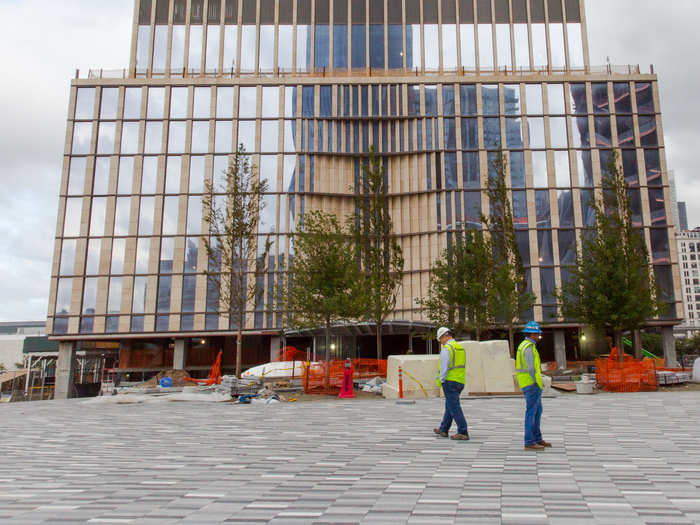
At 1,000 feet tall, it's the site's tallest residential structure. Upon completion in 2019, the building will feature more than 140 condos.
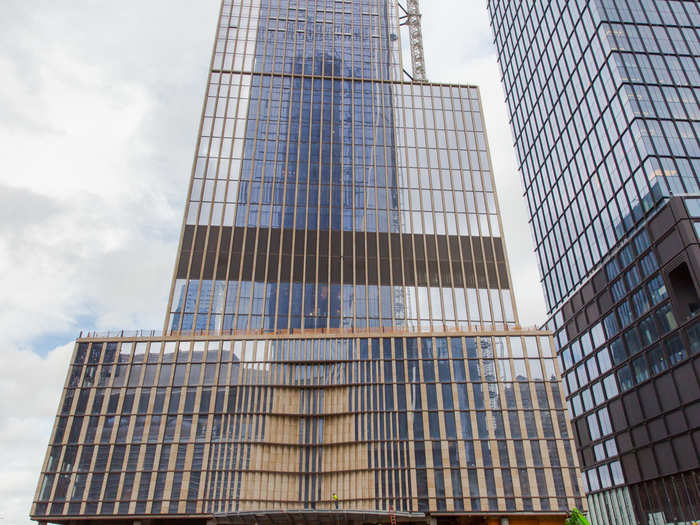
The prism-like structure was designed by David Childs, the architect behind the Freedom Tower.
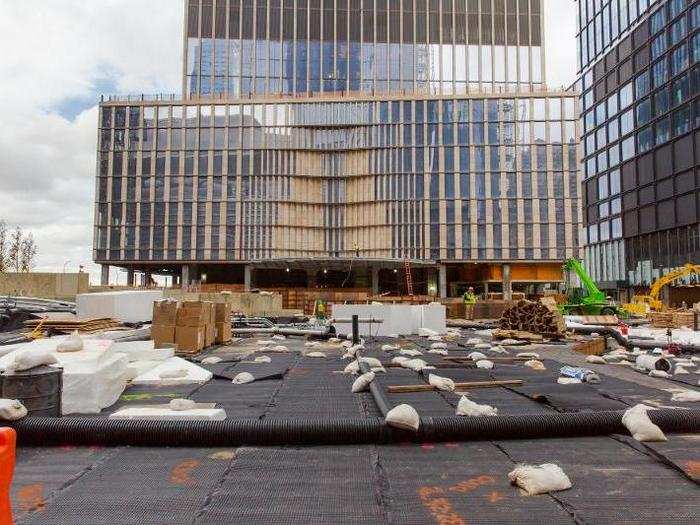
Next door is 55 Hudson Yards, a 1.3 million-square-foot office tower that will open at the end of the year.
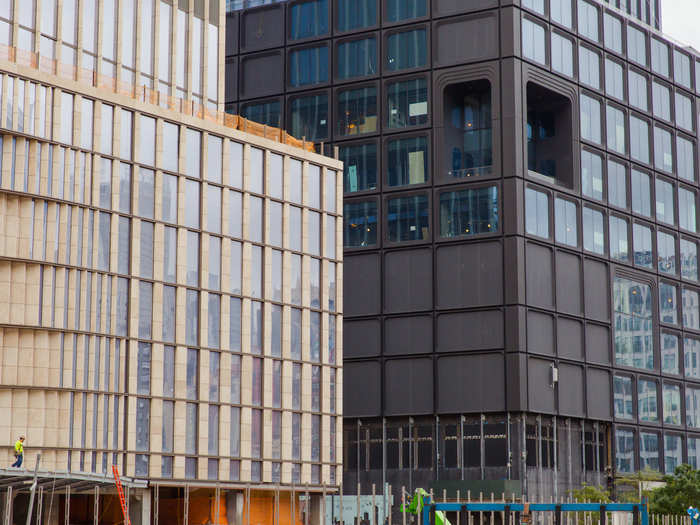
The entire site features more than 28,000 plants, including a forest of trees that sits above a ventilation system powered by 15 large fans. These fans help remove the heat generated by the train equipment below.
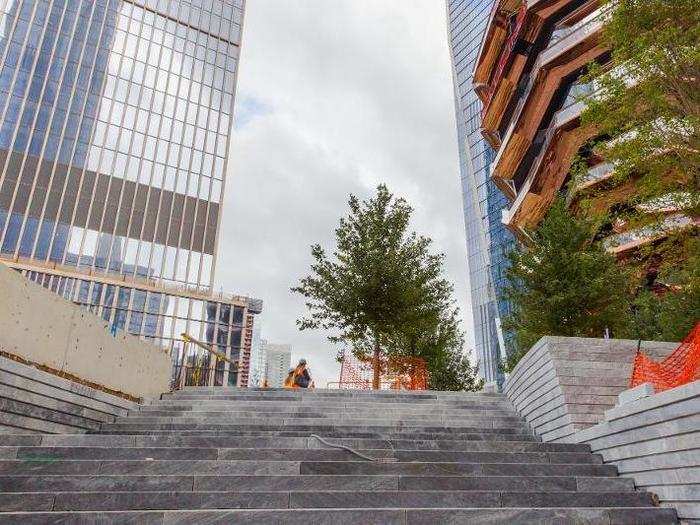
The finished project will include two platforms that form a bridge above the active Long Island Rail Road tracks. The platforms will eventually cover three-quarters of the Eastern and Western Railyards.
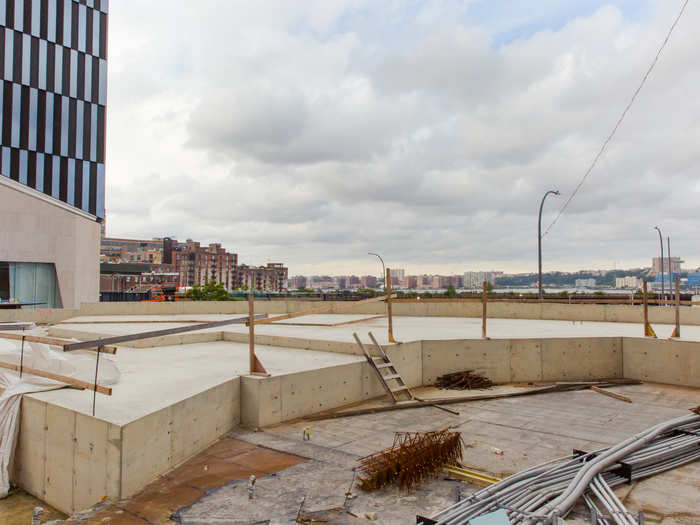
With phase one underway, the second of two phrases is set to be complete by 2024.

"Our goal is to move the center of gravity" in New York City, said Cross. Once it's finished, the site will contribute nearly $19 billion annually to the city's economy.
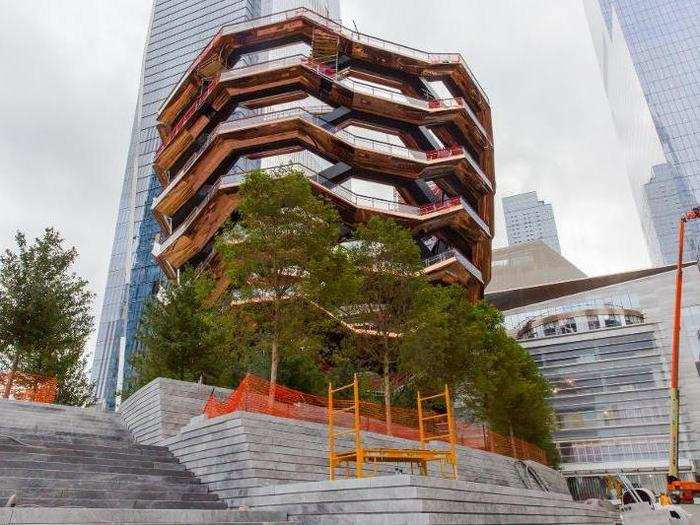
Popular Right Now
Popular Keywords
Advertisement